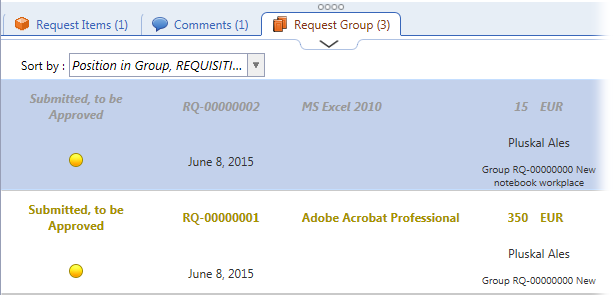Related Requests Recognition
Some real life use cases require the ability of the application to recognize and match a newly created service request with an already existing one. The following are common situations where matching of new service requests to existing service requests is beneficial:
- Re-requesting the same product or service for one system
The user requests a product or service that has already been requested (but not yet delivered) by another user for the same system. For example, two users sequentially request the same piece of software for the same shared laptop computer.
- Additional requesting
The user needs to add additional items to a request that has already been made (but not delivered yet). For example, a recently made request needs to be expanded by additional options.
Re-requesting the same product or service for one system
- User A requests a component for a particular system. The request is registered and is being processed.
- In the meantime, user B requests the same component for the same system.
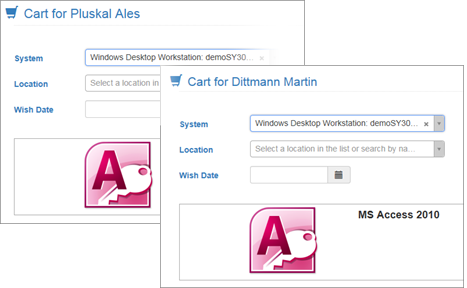
- Upon submitting the request, possible duplicates are recognized and a 'Similar Requests' message is displayed.
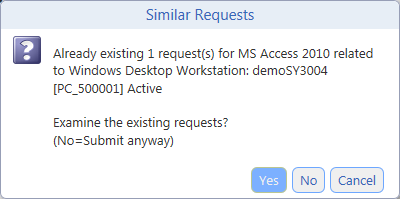
Three courses of action are now possible:
- Click 'Yes' to have the application display an overview of the duplicate requested item.
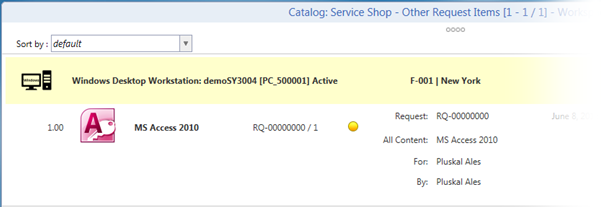
Inspect the duplicate request and close the overview window. Back in the Cart, click 'Submit Request' and use one of the 'Yes'/'No'/'Cancel' options according to the result of the inspection.
- Click 'No' to ignore the duplicity and simply submit the request.
- Click 'Cancel' to further edit the request, for example by adding to the 'Comment' field an explanation why duplicate components are being requested.
Additional requesting
- The user submits a request for system. The request is registered and is being processed.
- Later on, the user makes another request, this time he/she requests a component.
As a component must always belong to a system, the application reconciles the situation in the following way:
- If the user already has a system assigned, assigning the requested component to this system is offered to the user. (A selection from multiple systems is offered if multiple system are assigned to the user.)
- If the user does not have a system assigned yet but a request for system is registered for this user, then assigning the requested component to this requested (and not delivered yet) system is offered.
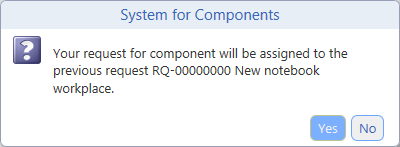
- Clicking 'Yes' assigns the component to the requested system
- Clicking 'No' enables assignment of the requested component to another system
- If multiple system requests are currently registered for the user, a catalog of these requests is displayed and the user is expected to select one of them.
- If the user already has a system assigned and at the same time a request for system is registered for this user, then assignment to the already existing system is offered first. If assignment to the already existing system is declined by the user (by clicking 'No' in the displayed dialog), assignment to the currently requested system is offered.
Selection from multiple assigned or requested systems is offered if multiple systems are already assigned or currently requested.
Request Groups
The above described way of requesting results in the creation request groups. A request group is created automatically when the requesting process leads to requests interlinking. The affiliation with one or more request groups is registered in the 'Request Group' tab ot the request editor.
